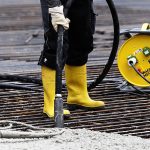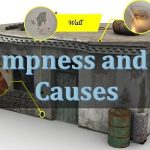Site Exploration Program
The knowledge about the site forms a vital role in the safe and economic development of a site. A thorough investigation of the site is an essential preliminary to the construction of any civil engineering works. Public building officials may require soil data together with the recommendations of the geotechnical consultant prior to issuance of a building permit. Elimination of the site exploration, which usually ranges from about 0.5 to1 percent of total construction costs, only to find after construction has started that the foundation must be redesigned is certainly false economy. This is generally recognized, and it is doubtful if any major structures are currently designed without exploration being undertaken.
OBJECTIVES OF SITE INVESTIGATION
The primary objectives of soil exploration is mentioned below
§ To access the general suitability of the site
§ To achieve safe and economical design of foundations and temporary works
§ To know the nature of each stratum and engineering properties of the soil and rock, that may affect the design and mode of construction of proposed structure and foundation
§ To foresee and provide against difficulties that may arise during construction due to ground and other local conditions
§ To find out the sources of construction material and selection of sites for disposal of water or surplus material
§ To investigate the occurrence or causes of all natural and manmade changes in conditions and the results arising from such changes
§ To ensure the safety of surrounding existing structures
§ To design for the failed structures or remedial measures for the structures deemed to be unsafe
§ To locate the ground water level and possible corrosive effect of soil and water on foundation material
Planning For Site Exploration
The planning of the site exploration program involves location and depth of borings, test pits or other methods to be used, and methods of sampling and tests to be carried out. The purpose of the exploration program is to determine, within practical limits, the stratification and engineering properties of the soils underlying the site. The principal properties of interest will be the strength, deformation, and hydraulic characteristics. The program should be planned so that the maximum amount of information can be obtained at minimum cost. In the earlier stages of an investigation, the information available is often inadequate to allow a firm and detailed plan to be made.
The investigation is therefore performed in the following phases:
1. Fact finding and geological survey
2. Reconnaissance
3. Preliminary exploration
4. Detailed exploration
1. FACT FINDING AND GEOLOGICAL SURVEY
Assemble all information on dimensions, column spacing, type and use of structure, basement requirements, and any special architectural considerations of the proposed building. Foundation regulations in the local building code should be consulted for any special requirements. For bridges the soil engineer should have access to type and span lengths as well as pier loadings. This information will indicate any settlement limitations, and can be used to estimate foundation loads.
2. RECONNAISSANCE
This may be in the form of a field trip to the site which can reveal information on the type and behavior of adjacent sites and structures such as cracks, noticeable sags, and possibly sticking doors and windows. The type of local existing structure may influence, to a considerable extent, the exploration program and the best foundation type for the proposed adjacent structure. Since nearby existing structures must be maintained, excavations or vibrations will have to be carefully controlled. Erosion in existing cuts (or ditches) may also be observed. For highways, run off patterns, as well as soil stratification to the depth of the erosion cut, may be observed. Rocky outcrops may give an indication of the presence or the depth of bedrock.
3. PRELIMINARY EXPLORATION
In this phase a few borings are made or a test pit is opened to establish in a general manner the stratification, types of soil to be expected, and possibly the location of the groundwater table. One or more borings should be taken to rock, or competent strata, if the initial borings indicate the upper soil is loose or highly compressible. This amount of soil exploration is usually the extent of the site investigation for small structures. A feasibility exploration program should include enough site data and sample recovery to approximately establish the foundation design and identify the construction procedures. It is common at this stage to limit the number of good quality samples recovered and rely heavily on strength and settlement correlations using index properties such as liquid limit, plasticity index, and penetration data together with unconfined compression tests on samples recovered during penetration testing.
4. DETAILED EXPLORATION
Where the preliminary site investigation has established the feasibility of the project, a more detailed exploration program is undertaken. The preliminary borings and data are used as a basis for locating additional borings, which should be confirmatory in nature, and determining the additional samples required. If the soil is relatively uniform in stratification, a rather orderly spacing of borings at locations close to critical superstructure elements should be made. On occasion additional borings will be required to delineate zones of poor soil, rock outcrops, fills, and other areas which can influence the design and construction of the foundation. Sufficient additional samples should be recovered to redefine the design and for any construction procedure required by the contractor to install the foundation. This should avoid an excessive bid for the foundation work, cost overruns, and damage to adjacent property owners from unanticipated soil conditions discovered when the excavation is opened.



Comments are closed